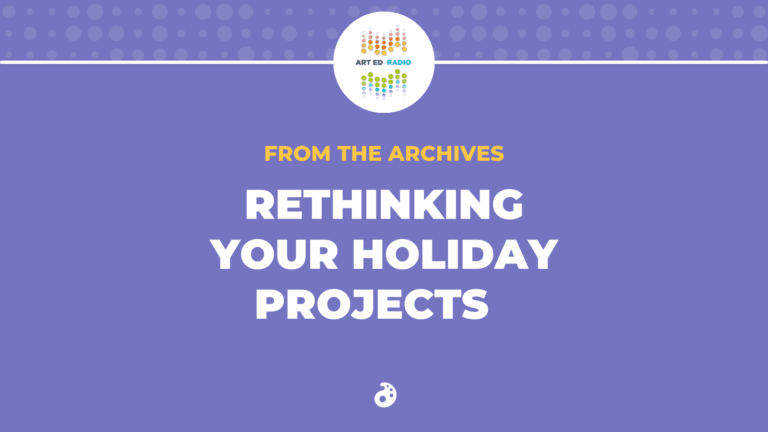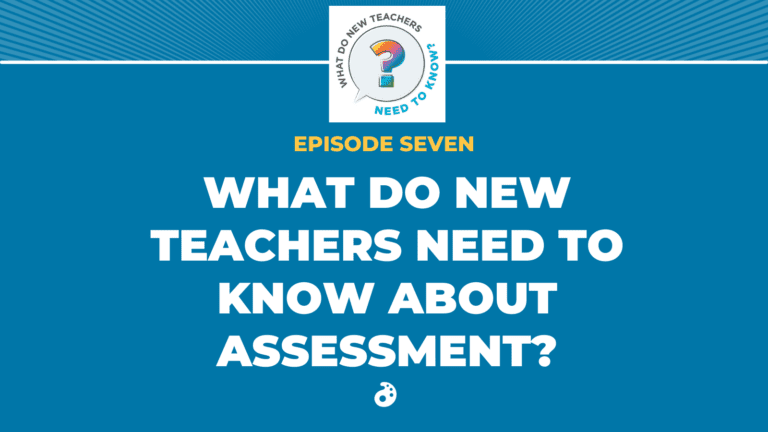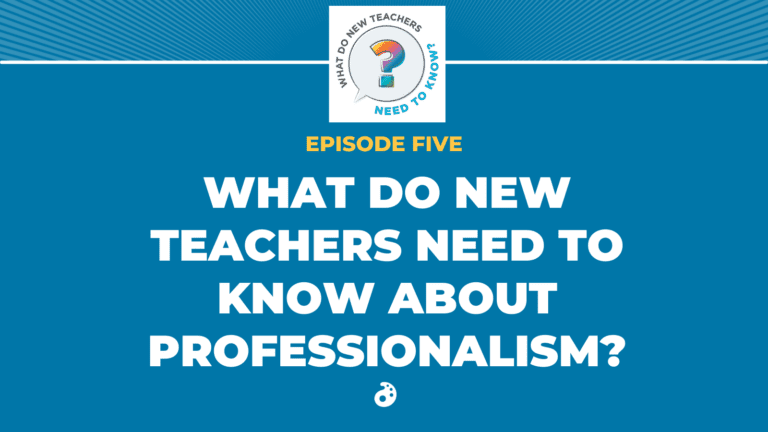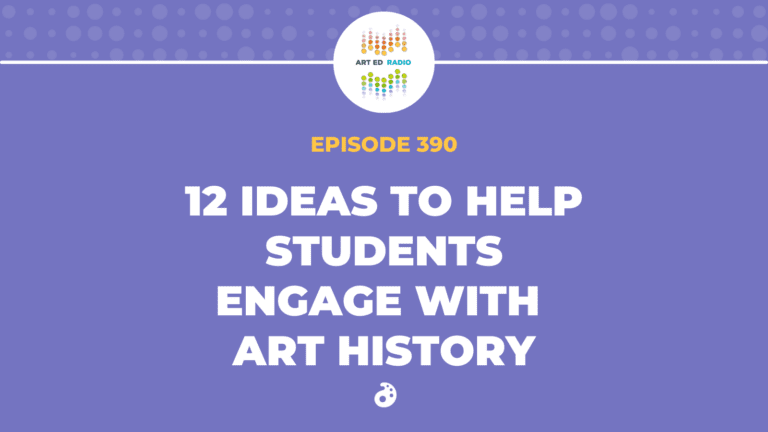In today’s episode, Nic shares her methodology for designing a quality lesson, from beginning to end. She discusses how she incorporates creativity to her lesson planning and why she loves the problem-solving aspect of developing a new lesson. Listen for her advice on working with standards, cross-curricular planning, and why you should put yourself in the perspective of a student. Full Episode Transcript Below.
Resources and Links
- AOEU’s FLEX Curriculum
- The Benefits of Trying New Things In Your Classroom
- Why You Should Teach Your Lessons in Reverse
- Using Essential Questions to Guide Online Learning
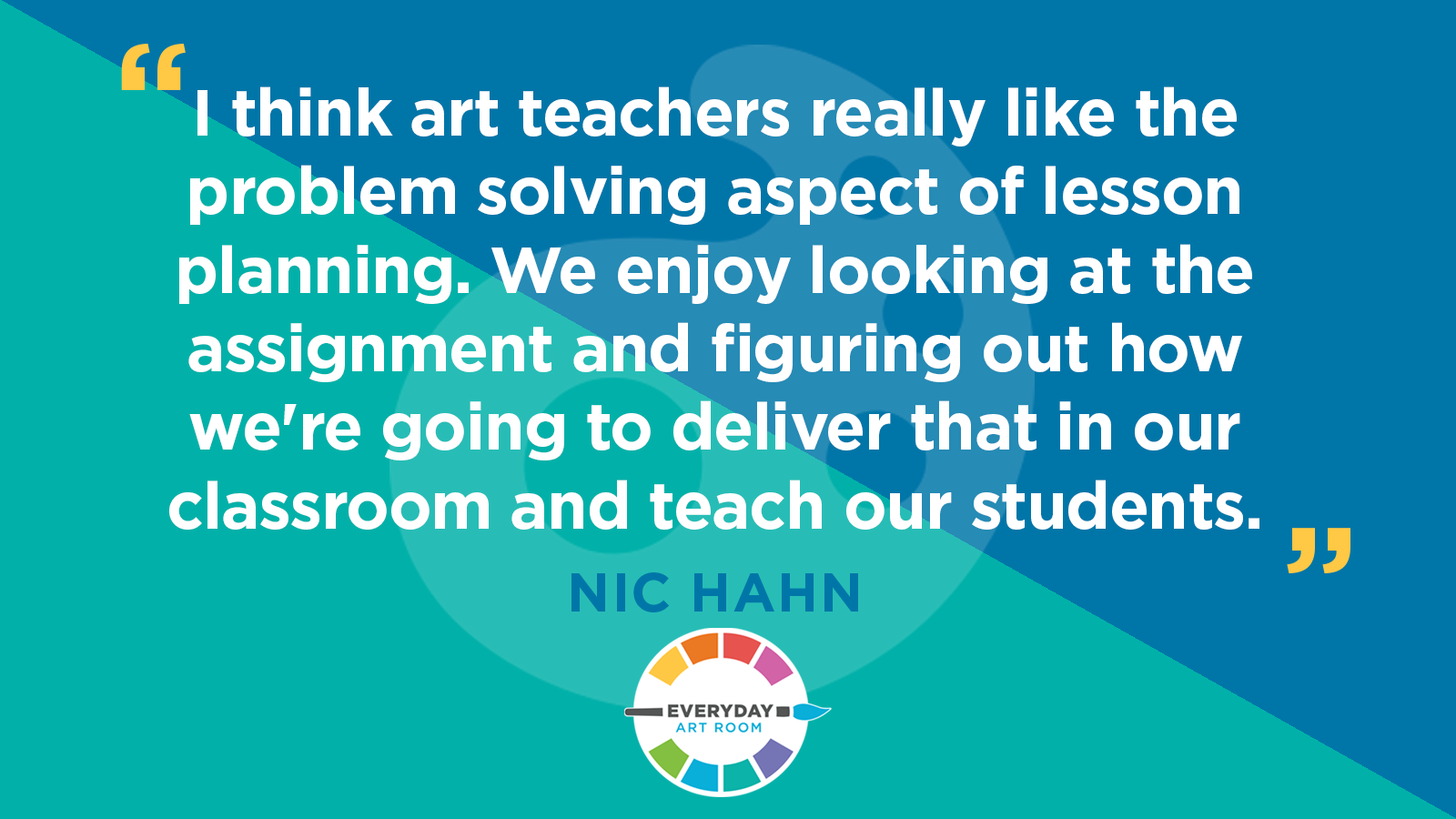
Transcript
Nic: When planning a lesson plan, there is more than just what ends up on the paper in order to get to the end result. It’s actually a very long process for me but it’s obviously something that I truly enjoy. It’s the problem solving of teaching that I think I really like. I think that’s my favorite thing. This is goes for my personal life too, anytime that I practice and practice and practice something and get it down, then I’m pretty much done with it. Hence, I have every craft possible in my studio right now. I’ve done needle punching, I’ve done felting, dry felting, I’ve sewn and as soon as I start feeling like I’ve got it and I’m comfortable, then I move on to discover something new. I love the problem solving of lesson planning.
I thought today we’d talk about the process of going through a lesson plan, creating a lesson plan, how that’s developed and see if yours aligns with me. Maybe you have a different process. I’m sure you do or maybe parts are different, but let me just share how it works in my world. This is Nic Hahn and this is Everyday Art Room.
I started thinking about this because recently I started developing some lesson plans. Well, I’ve done this before, but I’m recently back into this role of creating lesson plans for our FLEX collections that we have through the Art of Education University. And I’m really excited about the one that I’m creating right now. I really have no idea when this is going to come out, but as I’m creating this lesson plan, I thought, you know what? I’m just going to talk about the whole process that I’ve gone through to get to where I am right now. And again, I don’t know if this is something that is unique to me or maybe this is all art teachers that really like this problem solving aspect of looking at the assignment and figuring out how you’re going to deliver that in your classroom and to your students.
Usually what I do is I start out with the idea and this can come from a variety of places. In this case, the idea is stop motion animation. I want to teach my students stop motion animation, but how am I going to do it? Once I have the idea, sometimes it’s not a process. Well, sometimes it is a process like stop motion animation or sometimes it’s a medium. I haven’t gotten to clay this year. I need to make sure that I do that. What is the way that I’m going to teach my students clay? Or it might be a subject matter. I definitely want to hit the idea of space, let’s say. I know that there is a big project that my third graders are going to do and they’re going to be talking about space so I’m going to concentrate on the subject.
There’s lots of places that the ideas come from. In this case, we’re going to talk about stop motion animation, but I’m going to go a step further and also talk about backwards design. Backwards design was introduced to me, not in my undergrad, but rather in my Master’s program, which I guess still was about 10 years ago, when I think about it. Oh gosh, time flies. Anyways, backwards design is where you start with the standard, which I suppose the items that I mentioned before sometimes are the standard or the goal, but you start with the standard and then you figure out going backwards, how you’re going to bring that to your student. Instead of creating a lesson plan because you like the look of the product, I guess.
Let’s say you want to make sunflowers. You just saw this really cute sunflower on Pinterest and you think it’d be really fun for your students to do. Instead of starting in that direction with the end result, what I’m doing and a lot of times when we do that, what we do is we go back and say, “And it covers warm colors and cool colors.” We can talk about that. That’s an okay way to go about it too. But I’m talking about backwards design where I actually start with the standard or the need first.
Stop motion animation. Okay. We start there and then I’m thinking about the different levels that I will be presenting in FLEX. Just as a side note, the way FLEX is set up, it has beginner, intermediate and advanced lessons. I’m trying to come up with roughly five, six, eight and then nine, 12 lessons, but we call them beginner, intermediate and advanced because if a student has never used stop motion animation in this case, before, they’re probably going to need that scaffolding, that beginner underlying message before they can move on to the more advanced versions. Yes, in this lesson, we’re thinking about ages to the most part, but it also is the building blocks to get to that advanced level. I hope that makes sense.
Then I start thinking about the national standards. I really like the way the national standards are set up these days. I liked how they were before. I understand where they came from, how they were developed and I don’t want to take away from anyone who was a part of the development of the standards prior, but the party who came in, I’d say, whatever, five years ago, six years ago and redeveloped our national standards, kudos to you guys. I really like the fact that we have four big ideas that create, present, respond and connect. Those are wonderful, big ideas. I really enjoy those. And most of the time, that’s what I’m thinking about when I’m thinking about my lessons are those big ideas. And then I guess if I break it down a little bit farther, I might go to the anchor standards.
Underneath each of those big ideas, we have two or three different and anchor standards. And again, Not the big idea of create, but a little bit smaller idea, but still rather big. And then you can go in a little bit farther and for the Art of Education University, that’s what we do for the FLEX curriculum is we actually go in a little bit farther and we’re looking at the grade level expectations for each standard. Starting with the standards and going backwards, backwards design is a really good way to make sure that you’re meeting the goals in a quality way, because once you find that standard and look at the verbiage and the words that come with the standard, you’re going to then start using those words in your goals, in your lesson plan, in the way that you explain to kids, if you make it to the forefront of your lesson.
And I will say, when I’m developing a lesson, I might hit several standards but what I’m doing is looking at one, maybe two standards, pushing it with three, because what I want to do is a really quality job with the one or two standards that I’m really focusing on. I can definitely hit on whatever, all elements and all principles of design, but those are not the things that I will be assessing later. Those are not the things that I will be concentrating on, but they can be exposure within the lesson.
Once I have my standards, then I start developing how I’m going to meet those standards. And I still have that big idea, I’m doing stop motion animation. I’m thinking about the level of student that I’m working with and the median for the most part, but also how I can differentiate for my higher learners at that level and my more developing learners at that level. I’m thinking about K, one, two to begin with for this particular example. What are my youngest students going to be able to accomplish in stop motion animation? Can they take on the whole app? What concept do I want them to work on? Actually, that’s kind of the last thing that I think about. I’m still thinking about their fine motor and their understanding and the minutes of attention that I can get from them, which reduces what I can do.
Am I going to make this a group project? Is this going to be individual? Will I need assistance for this? Will I need to bring in a volunteer to kind of help out, coordinate this in my classroom? These are the things that I’m thinking about as I’m working through a lesson plan idea and legit just thinking about it. Sometimes I need to sleep four or five nights on it before I wake up with the idea of how I want to move forward. And I think that’s important to know too. Don’t get frustrated if you’re not coming up with a way to really explain a certain standard. Put it in your brain, even write it down and let your brain start working on the backend, the subconscious, and see what pops into your brain.
And then make sure that you have a notepad or your iPhone by you or something that you can talk into and make a notation of your brilliant idea. Because I can’t tell you how many ideas I’ve had while I’m taking a shower and I have to stop and quick, write it down otherwise I know I’m going to lose it by the time that I’m brushing my teeth because I’m trying to do a really quality job. And I’ll say, when I share a lesson, I’ve put in hours and hours and hours. That’s happening with the FLEX lessons, anything that I sell on TPT, anything that I ask for some kind of payment for, I guess you could say, I’ve put in hours of research and just really looking into the subject matter.
Now I have taught stop motion animation for many, many years. We used cameras at one point, little cameras and SD cards and then downloaded them onto the computer. I’ve gone through many of the processes. I want to say I started in probably 2005 with stop motion animation in my classroom. And what I’m saying is that I’ve done this over and over and over in my classroom. However, when I’m going to present it to someone else, I’m going to start doing some research, lots of research. I usually start on Instagram. You guys know that about me and I just kind of type in a hashtag, stop motion animation. Or YouTube is a great one for this. Taking any classes that you can possibly take. I took a class from Trisha Zemp. She is a stop motion, animation artist and I just took a lesson, took her class to figure out how she teaches her students. And there was quite a few terms that I learned. The vocabulary that I learned from taking a class myself.
Just really putting myself into that role of being a student, learning from other people, finding out how they’re teaching, watching some YouTube, doing my research, looking online, finding anything that I can to help support this lesson. That’s happening as I’m developing my ideas. Now, in this particular case, I’m doing six different lessons for all the different levels so I came up with this kind of group project where the kids are just simply placing pieces down in a symmetrical way, doing a stop motion for my youngest artists. And then I develop that more and I put a little bit of science into it and so now we’re creating a bug and there’s ways that the pieces come in from utilizing the idea of stop motion animation. And then I continue on.
Now do you see how the first one was just putting down the pieces? The second one was moving the pieces into my space of a recording and then I become more advanced. I am thinking about scaffolding and I think if you are an elementary teacher or if you’re a middle school teacher, or even sometimes I’d say the high school teachers. The high school teachers need to think about what are they going to teach in painting one that it will give them the base to continue on in painting two? We have to do the same thing. What do we need to teach our kindergartners in order to make sure that they can walk in with a quick review on the primary colors, let’s say that we taught them in kindergarten? Do a quick review and move on to our secondary colors.
There’s a little bit of that scaffolding and that’s happening within this FLEX plan. And by the time I got to high school and the high school lessons or the advanced lessons, I was so excited because I am anticipating that the students have already had these building blocks to go up to the advanced measures and I’m actually going to have them do, well, it’s going to be set up as an artist statement in stop motion animation. However, it could be so many things. It could be a poem coming out of someone’s mouth or someone’s hand. It could be a story. It could be any kind of message in the stop motion animation style. It was fun for me to create a lesson that was so deep and meaningful. Or it could be deep and meaningful given to a high school student when a lot of the time I’m working with my elementary age students and I’m working on those building blocks that will advance them later on in life.
Now I have my idea. I’ve kind of written down my guess of how I’m going to teach the lesson. It’s very loosey goosey at this point, but it gives me an idea of how I would present it to my class. And in addition to that, I’m creating a project sample. Never have I ever, okay sometimes I have gone in and started teaching without practicing first. Most of the time I flop. There are some successes and I’m sure some of you have had experiences where you go on the fly and something great comes out of it. And that’s great. I’m not that person. I need to create it ahead of time and just kind of get the feel for what the mistakes are that a student might make or what might be difficult for the young hands of some of my youngest students. Doing a project sample is essential in my process now. I really don’t teach very often without going ahead and practicing first by myself. And sometimes if I can grab a neighbor kid or two and teach them, that gives me a lot of information as well.
We’ve talked to some guests in the past on the podcast that use their kids in a similar way. They’re so enriched and experienced, but it’s also research for mom and dad to learn how to teach their students in the best way possible. I’m creating the lesson plan or the actual project sample and I absolutely love this part because I get to create, or I get to make. This is a really, really fun part for me, but I definitely think day one, two, three, four with the kids, that’s why we do it.
Once we have that lesson plan developed, we’ve made our project sample. We know kind of how we’re going to break it down. Day one rolls out and we’re talking for our kindergarten through fifth grade, probably in a digital days type of setting is what I’m speaking to. They come in and you’re so excited because you’ve prepped all of your materials, you have it all ready. You have your presentation, you’re ready to teach the vocabulary and the process and it bombs. Almost every time, my day one kids, the kids that learn my lesson first always have the short end of the stick. For sure. They don’t get the same quality as the day two and the day three and the day four. But what’s really good about this is that that first day has continued to change for me all the time.
I’m going to teach day two and I’m going to take all the changes that I need to from my lessons that the kids have taught me on day one of how to teach them better and they’re going to give me a better experience, a better product. Day three is going to give me even more and day four is going to give me even more, maybe day five. Sometimes if I feel like that day one had a really, really bad experience, I’ll repeat the lesson that I did with day five. Now I’ve got it all figured out. I’m ready to teach the kids in a proper way. I’m going to reteach my day one, if it’s a total bomb, which has happened and that’s okay, this is part of the learning process. I continue. Now, my day two is actually my first experience and so they might end up getting a second lesson and that’s all right. But that’s just to prove that you can have the best lesson plan written out and the best ideas for your lesson, but the kids are really going to teach you what’s best, how to teach it the best.
This is when I take the time to finalize my lesson. After I have taught the lesson to five different classes, then I sit down and solidify my notes. This is what I did first, this is what I did second, these are the materials that really worked. These are the things that I mentioned. Here’s the resources that I used. I’m writing everything down. I keep it all. I don’t print it out anymore. I keep it all in my Google Doc and I usually have a slide show that’s developed with it. I have it in the storage that’s online, but after the learning lessons, you want to write it down because you may share this or try it again next year and you need to know you’re learning lessons. Everything that you’ve done, otherwise you’re going to repeat yourself. You’re going to make the same mistakes. Because sometimes the planning is so strong, you’re going to think, oh yeah, yeah, I did it this way, but it might just be the way that you planned to do it, but not the way that you actually did it.
Once that is solidified and written out, you have a highly polished and qualified lesson that you can present to others. We didn’t really get into assessment too much, but throughout, and let’s hit on that just a few minutes. Throughout the whole lesson, I have those standards that we were talking about in mind, just the one or two standards, the things that I’m trying to really accomplish. The big ideas, maybe I’m talking about social justice or emotional, social emotional aspects. Whatever I’m focusing on, I’m making sure that I mention them in every lesson. Some of you are using things like I can statements. Some of you are using targets or goals, but you have it maybe posted or you’re mentioning it in your lesson several times. That is important to have so that by the end of it, they have truly, they as in your students, have truly grasped what you are teaching them. They’re not just saying, “I made a pretty picture.”
They’re able to retain the information that was learned through the process of making that pretty picture. This is important for the assessment. Now you have two different kinds of assessments and you’re going to write these down as soon as you have developed exactly which one works the best. You’re going to do some formative assessments and that is just informing you of how the lesson is going. Do you have to reteach something? Do they have it ahead of time and you don’t really need to cover it as much? Formative assessments along the way and these formative assessments are trying to talk about those overall arching goals. Even though you want to make sure that the students use the primary colors in this artwork, that is the instruction. If it’s not a goal, a standard that you’re trying to reach, you don’t need to assess on that. That’s not important. Keep that in mind.
And then of course, there’s the summative assessment and the summative assessment just simply means the end. You’re going to take those two or three standards that you chose for this lesson plan and you’re going to use the verbiage and the ideas from those standards and create an assessment. And really you should have that assessment done ahead of time. But I feel this is kind of what I talked about, I feel sometimes I need to change those assessments as I’m developing the lesson, as I’m teaching the lesson for the first time.
There is a little bit of grace that I give myself, a little bit of flexibility, because if the lesson kind of goes down a different path, I might have to make some adjustments to my backwards design that I started. And that is the reality of lesson planning. Giving yourself grace, giving yourself flexibility. If you come out with an outcome, that’s a happy accident, embrace it and move forward. If you didn’t hit the standard, the way that you had hoped, redevelop a new lesson that allows you to hit that in a different way. You learned a lot from the lesson that you currently taught, use those lessons to create your next one.
That was kind of some insight of how I work lesson planning for myself in the art education world. It doesn’t happen exactly this way for every single lesson. My goodness, we have five different, six different grade levels a lot of the time in the elementary. Some of you have more than that. Can you put this much energy into every lesson that you teach? No, you can’t, but here’s what you can do and here’s how I would just recommend you break it down to if you’re a new teacher, you’re just starting out, do this process for one of your grades. Maybe you choose to do second grade and you just really develop some amazing lessons for second grade all this year and you’re surviving with your other grades.
But for second grade, man, you’re rocking it. You’re doing the research. You are just feeling good. You’re talking to the homeroom teachers and figuring out their curriculum so that you can do as much cross curricular as possible. And you’re talking to the special ed teachers to make sure that you can differentiate your lesson. That’s all happening, focusing on second grade. You’re still going to learn for your other grades and you’re still going to be teaching your other grades, but you’re going to give yourself grace in those other areas. Then on year two or three, you choose another grade level that you really concentrate on. This is going to help you break it down just a little bit so that it doesn’t seem that overwhelming. Of course use other resources around you.
You need to supplement what you’re doing when you’re developing your lessons, supplement with the other teachers out there that are sharing in our PLN, our professional learning network. Reach out to them, see what they’re doing. Watch them on social media. Come to the Art of Education University and look at our FLEX curriculum. I can’t even tell you how many resources and lesson plans are free on there and then talk to your administration and say, “Hey, I would love to have that FLEX curriculum in my classroom. And this is why.” And you can point out all the things that I’ve just told you today about the research that goes into it.
And my eyes are not the only ones that create these lessons. I am one teacher out of many teachers on this team that first of all, look at my one lesson that you will teach. You’re going to have several different opinions coming in and then also these lessons are coming from many different art educators. You will be able to find something that matches your style easily. Also will meet the goals of your school because there are categorized in not only standards, but then also big ideas doing cross curricular, socially emotional, different STEAM and STEM. These are the categories that you’re going to see when you visit FLEX. Utilize those materials and then have fun developing your own style for your lesson plans.
Magazine articles and podcasts are opinions of professional education contributors and do not necessarily represent the position of the Art of Education University (AOEU) or its academic offerings. Contributors use terms in the way they are most often talked about in the scope of their educational experiences.
